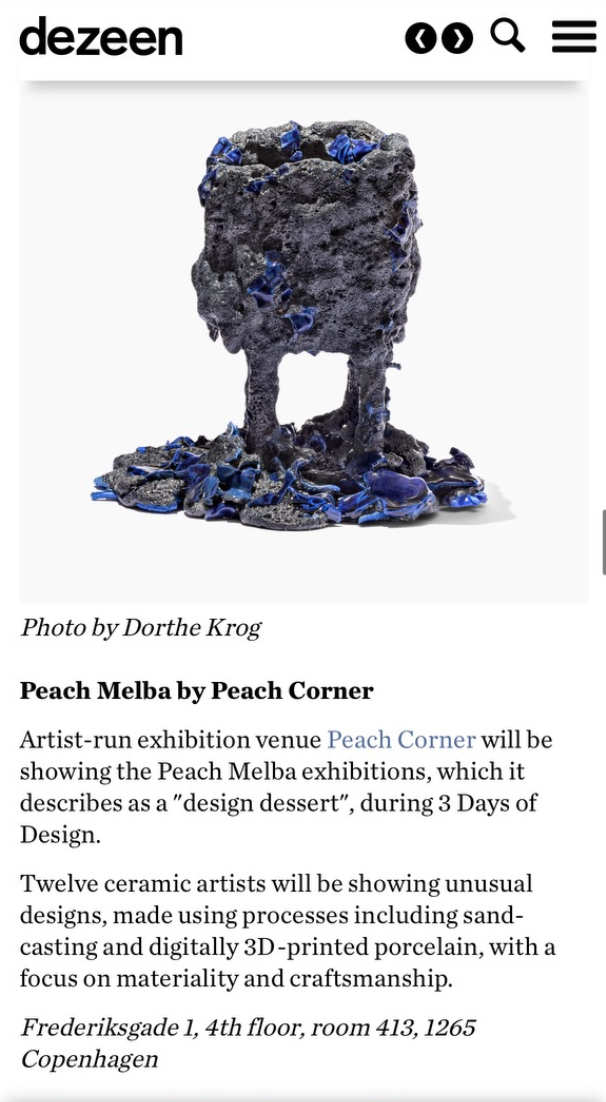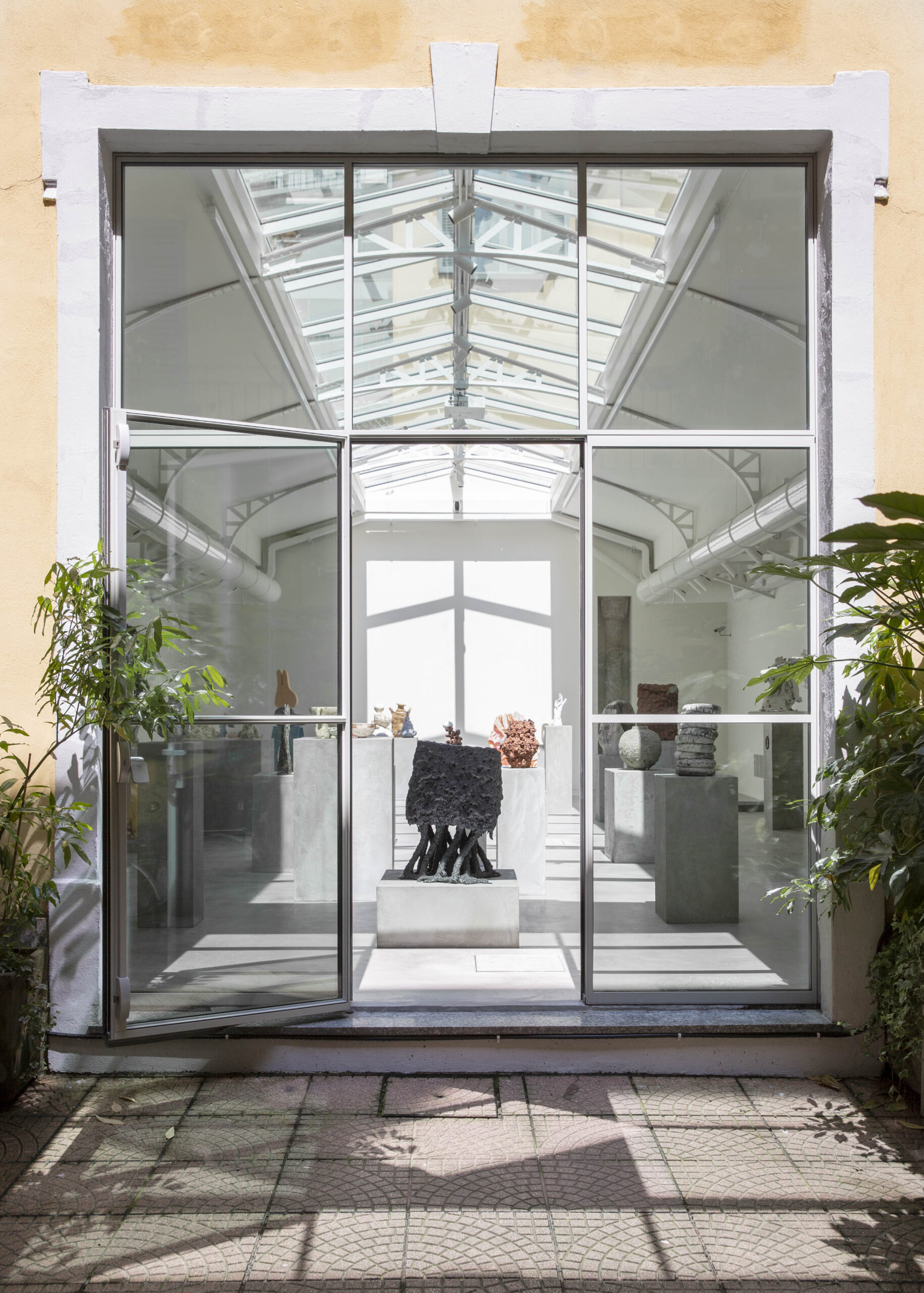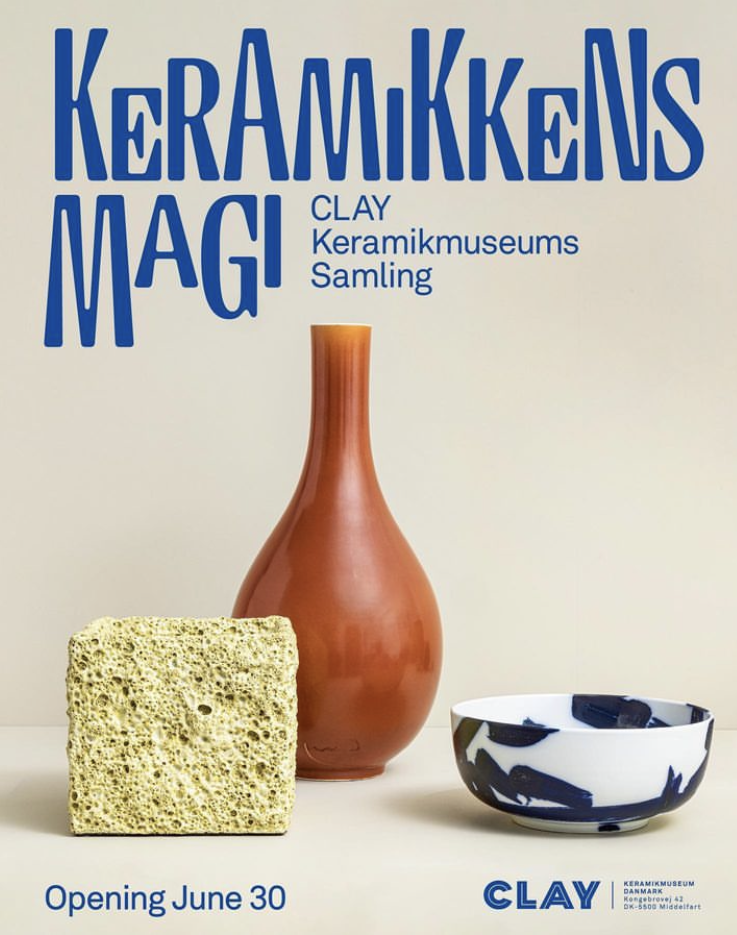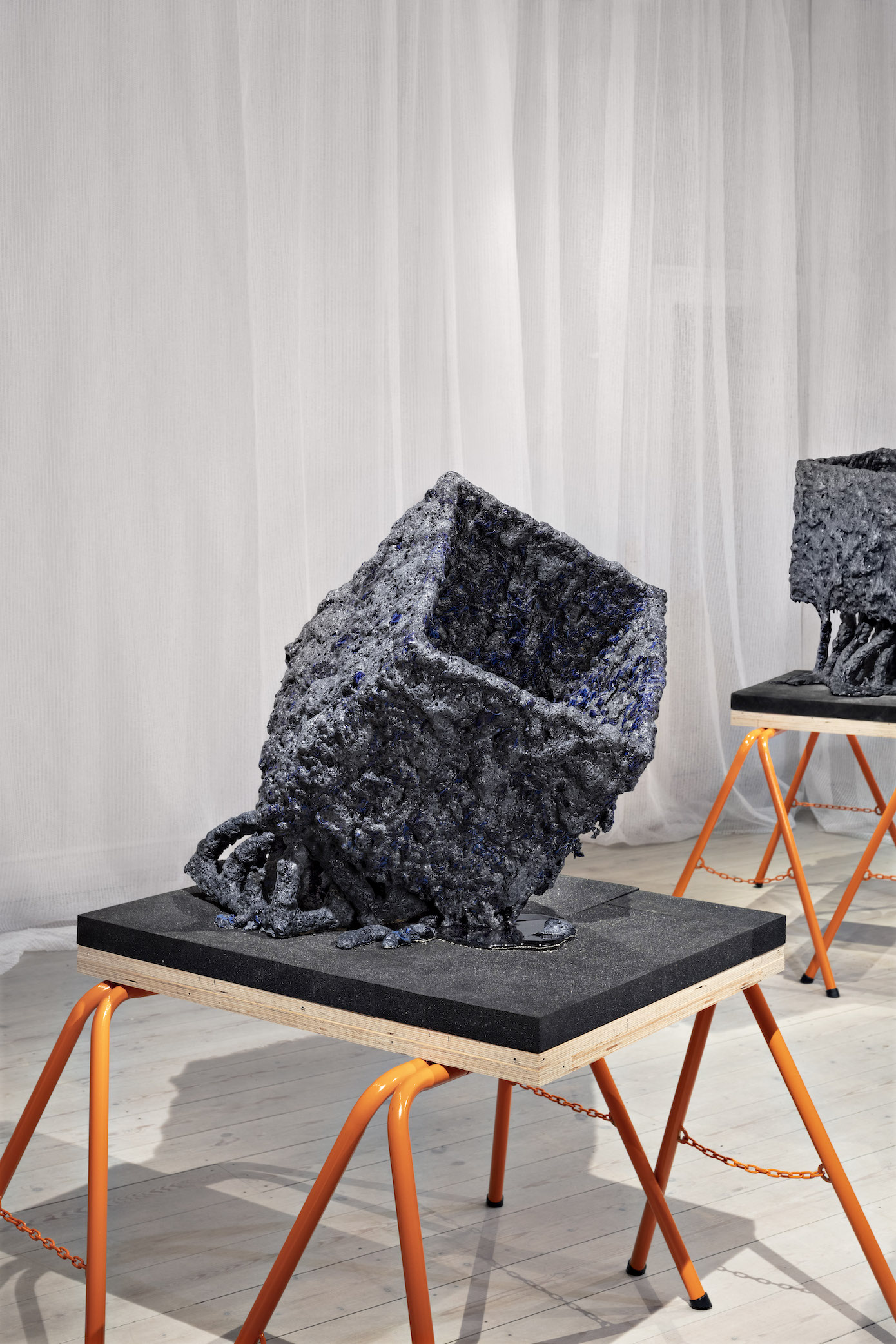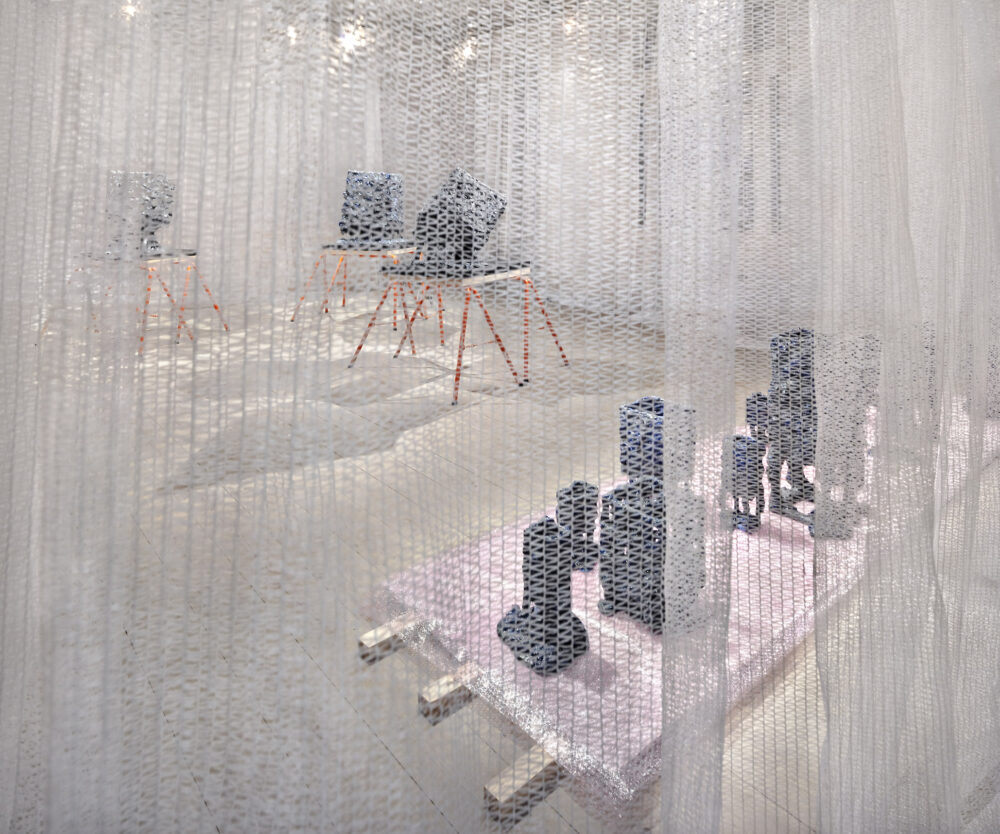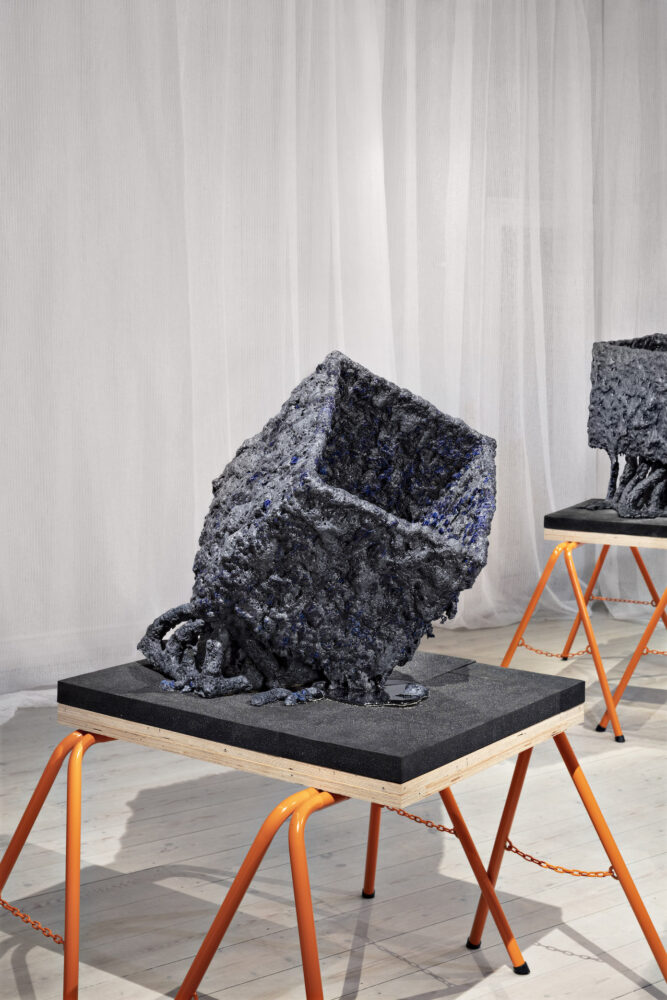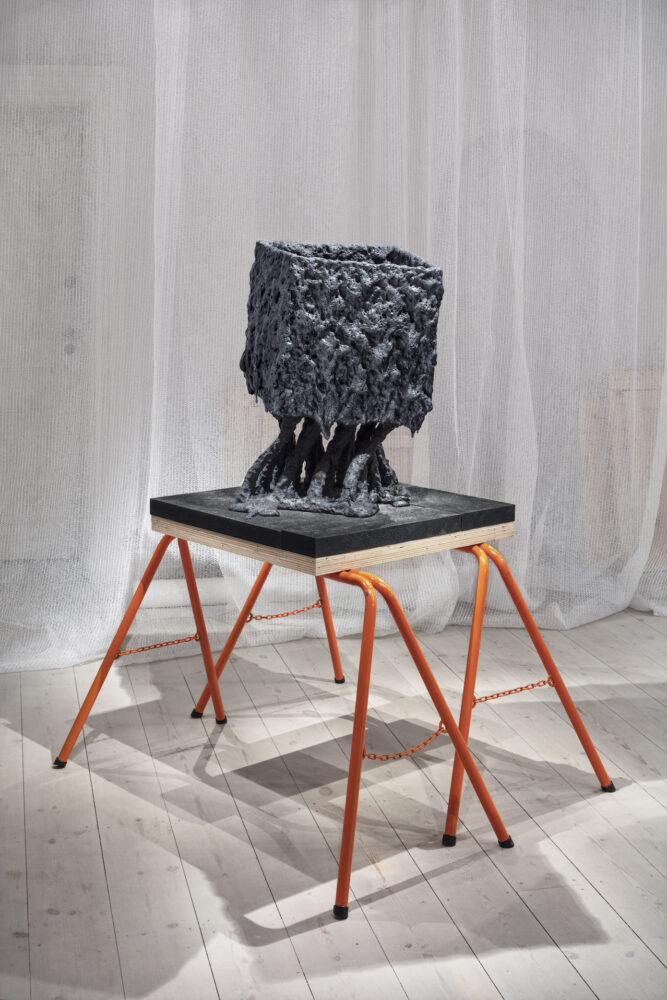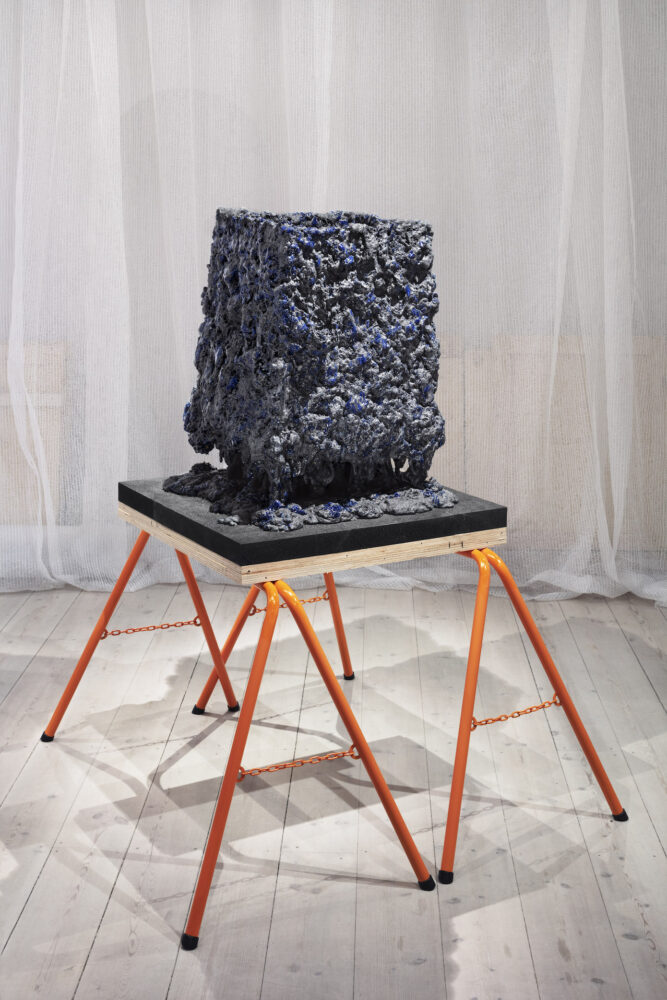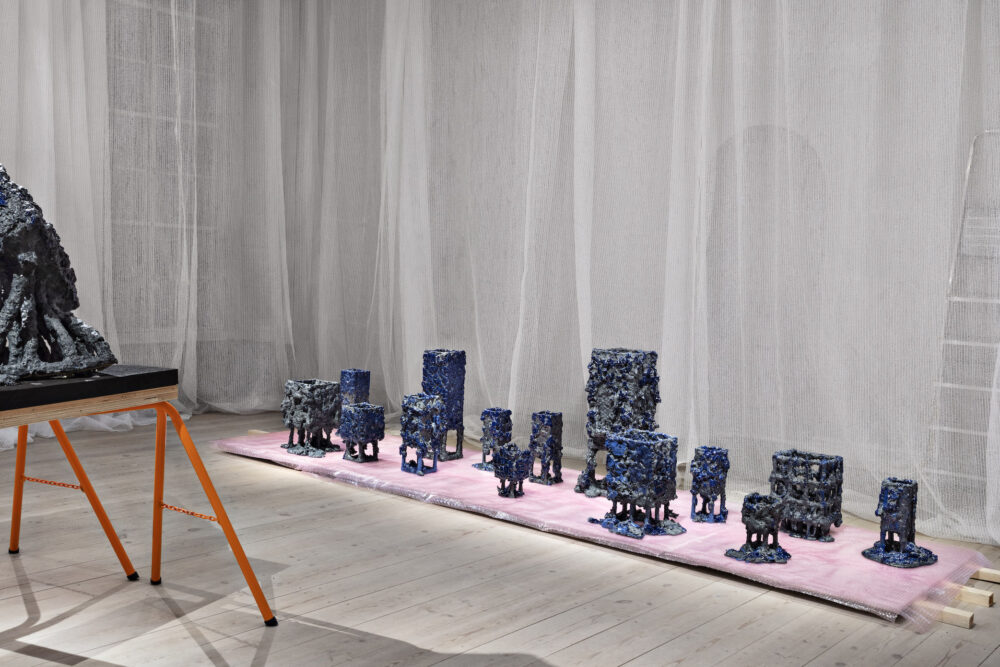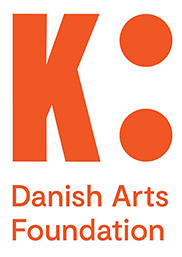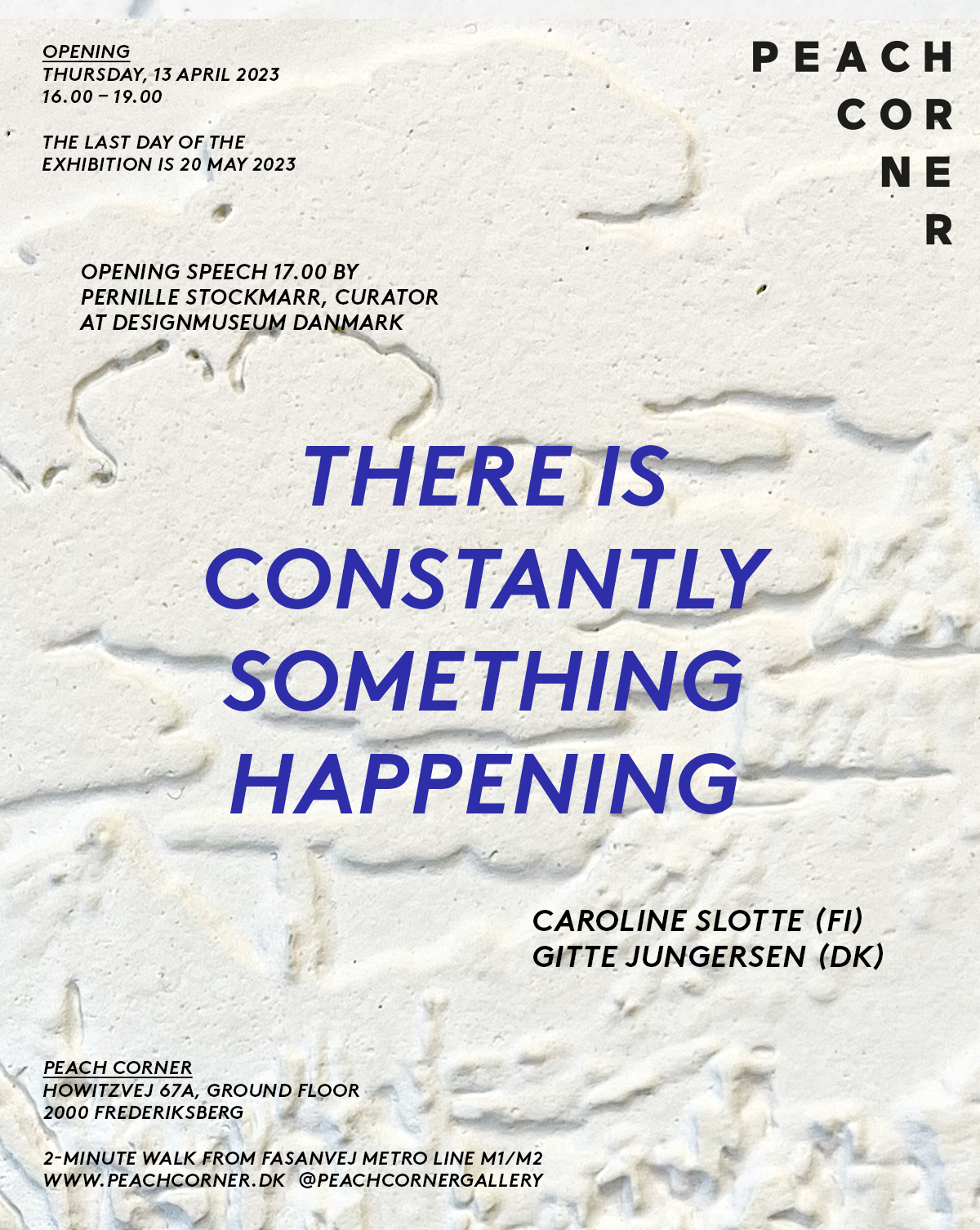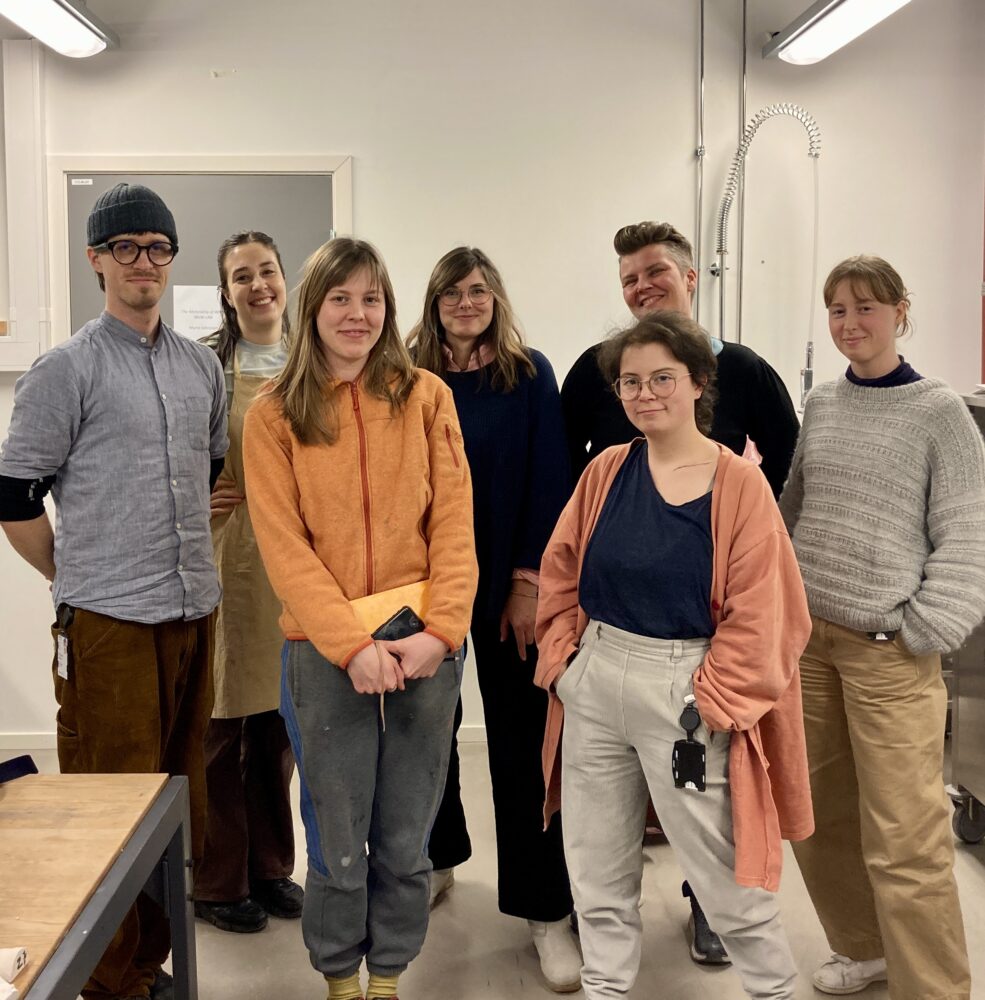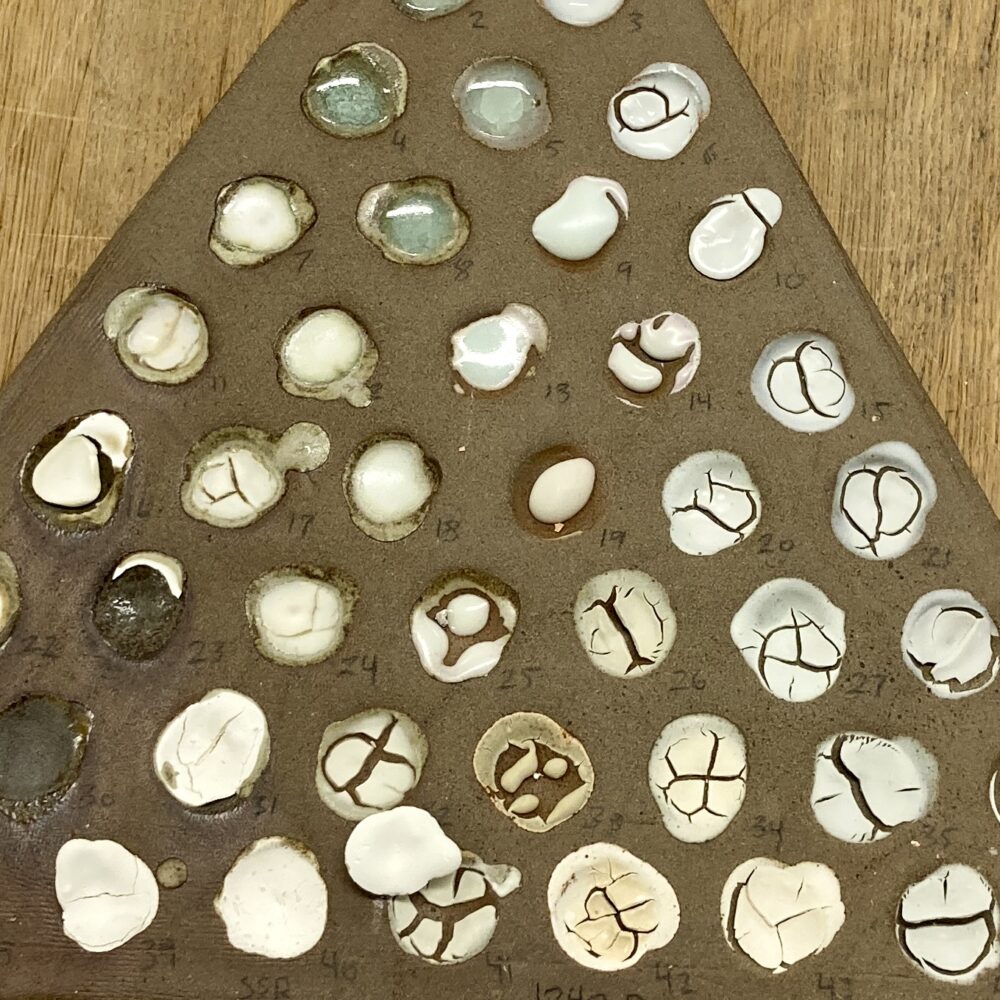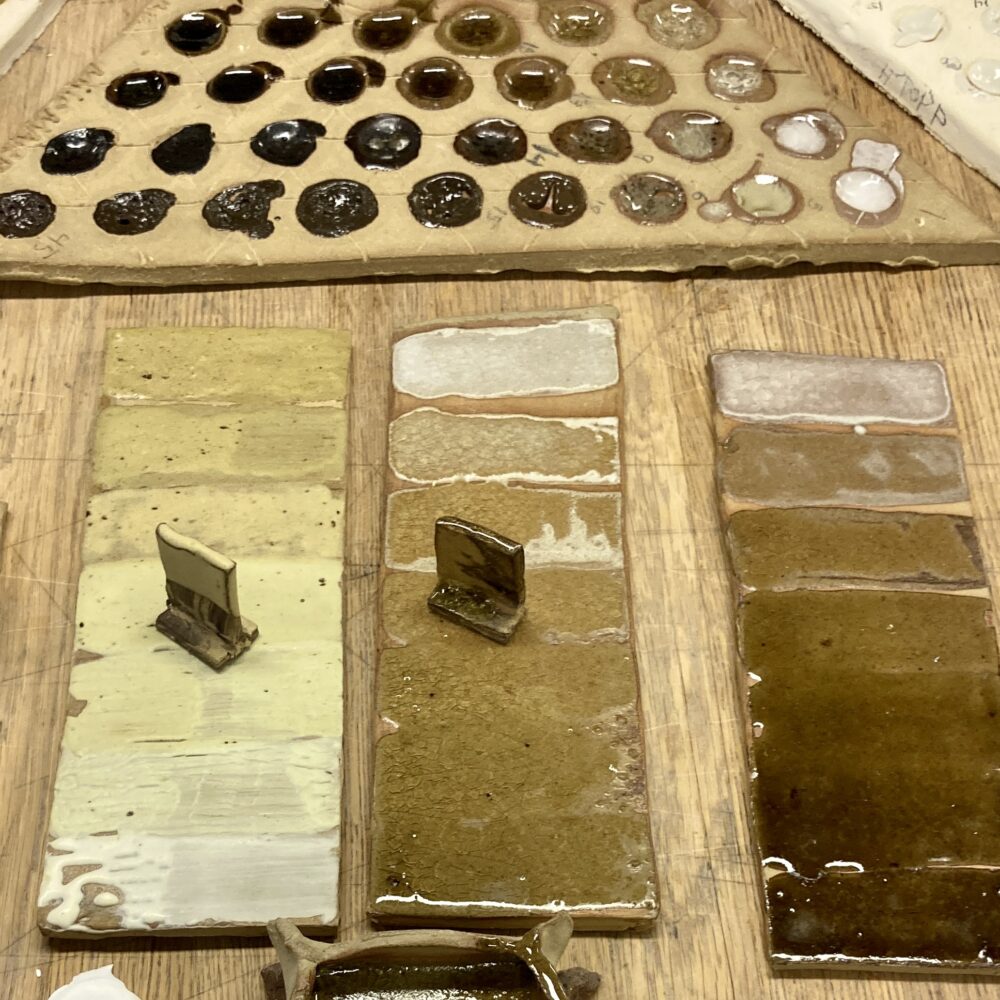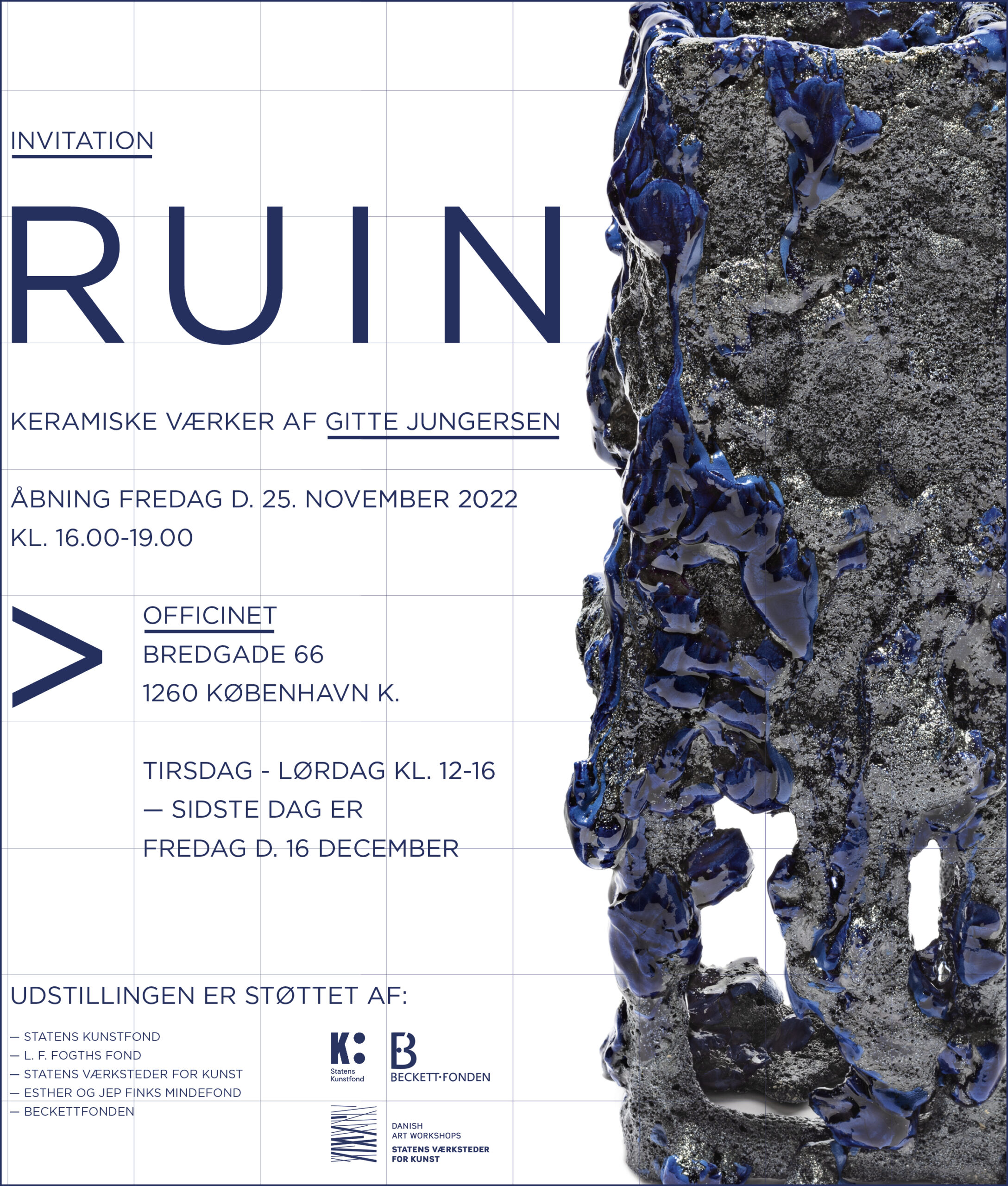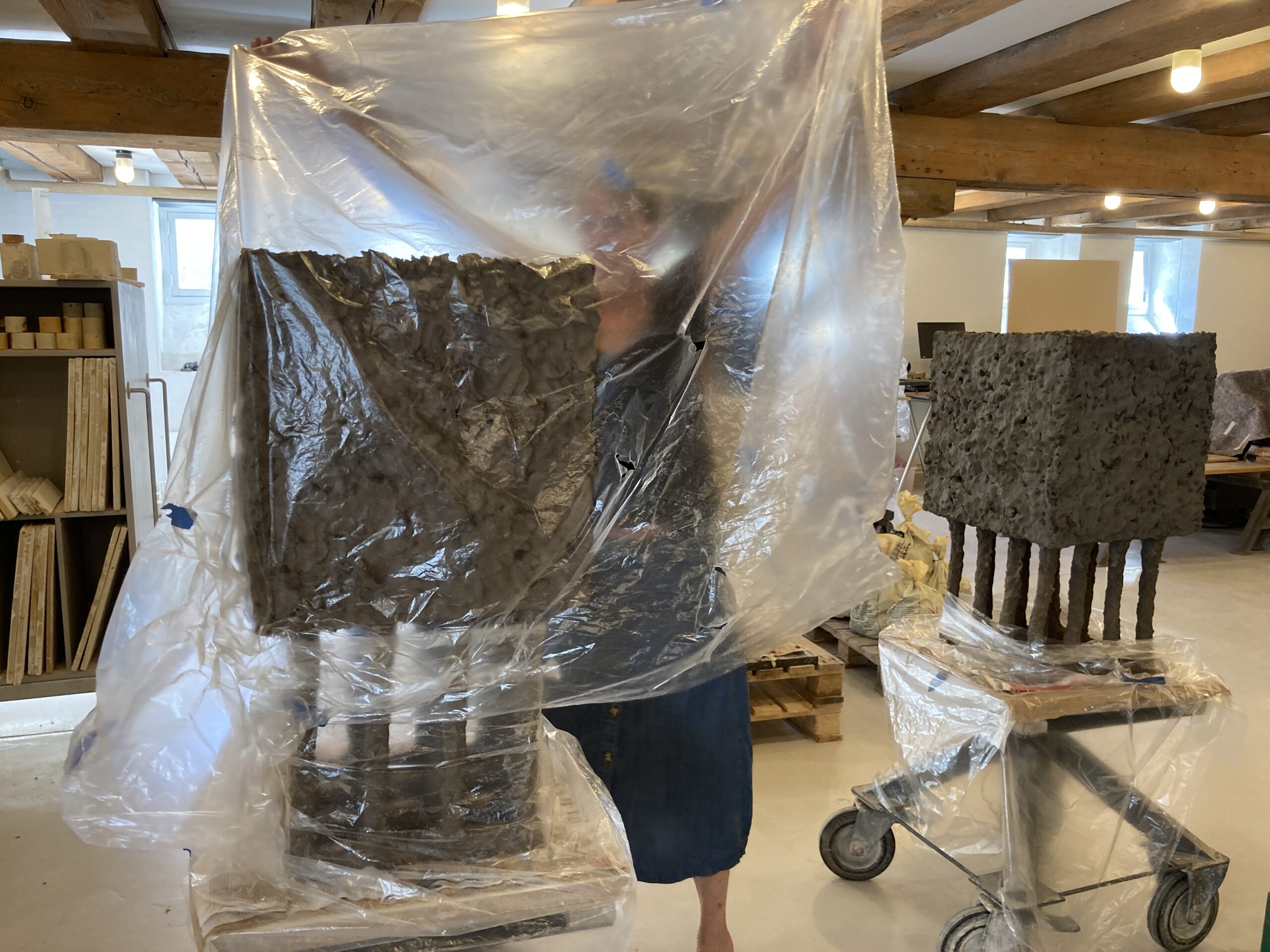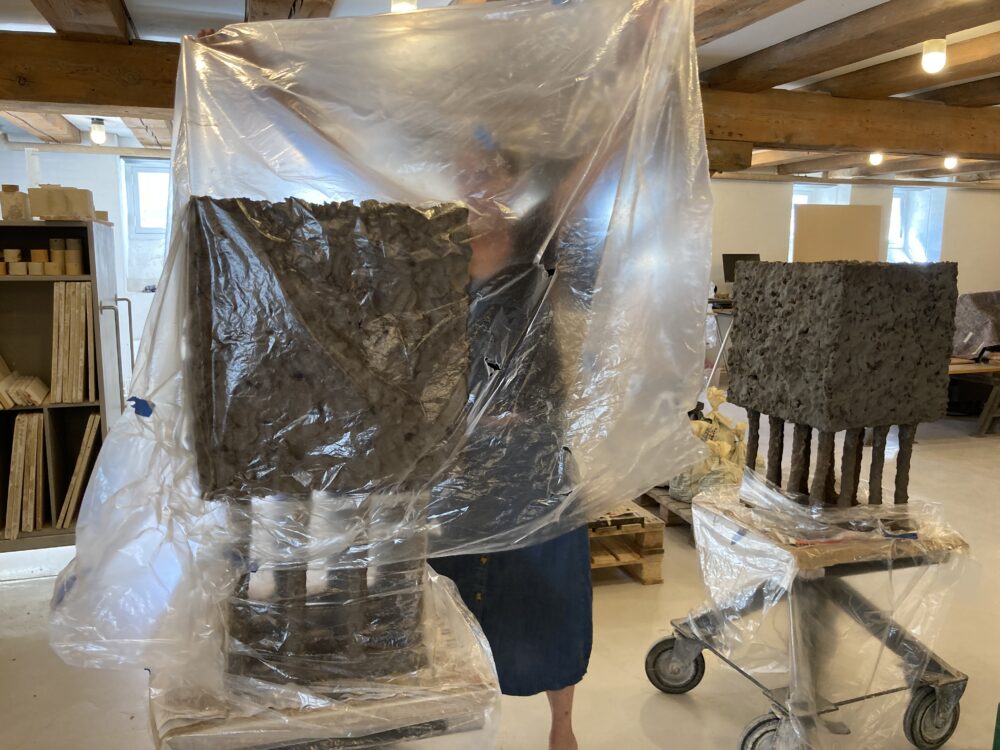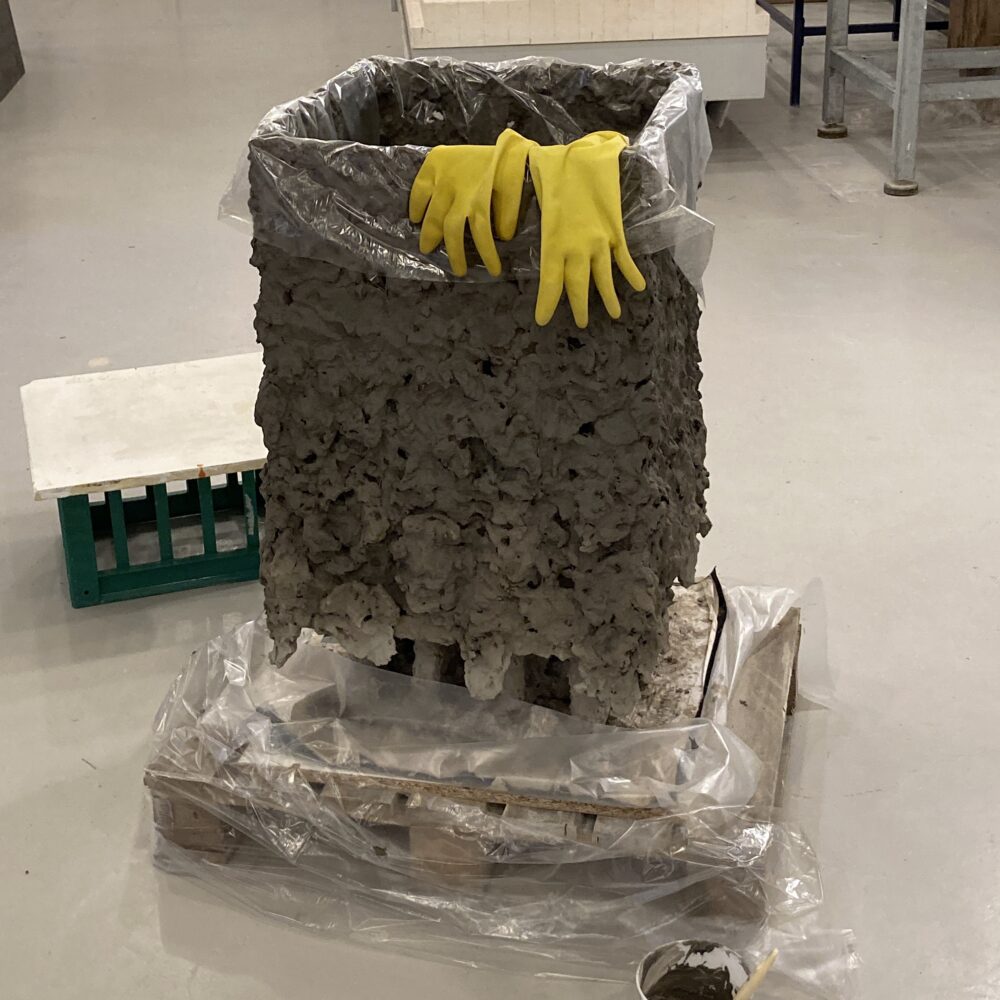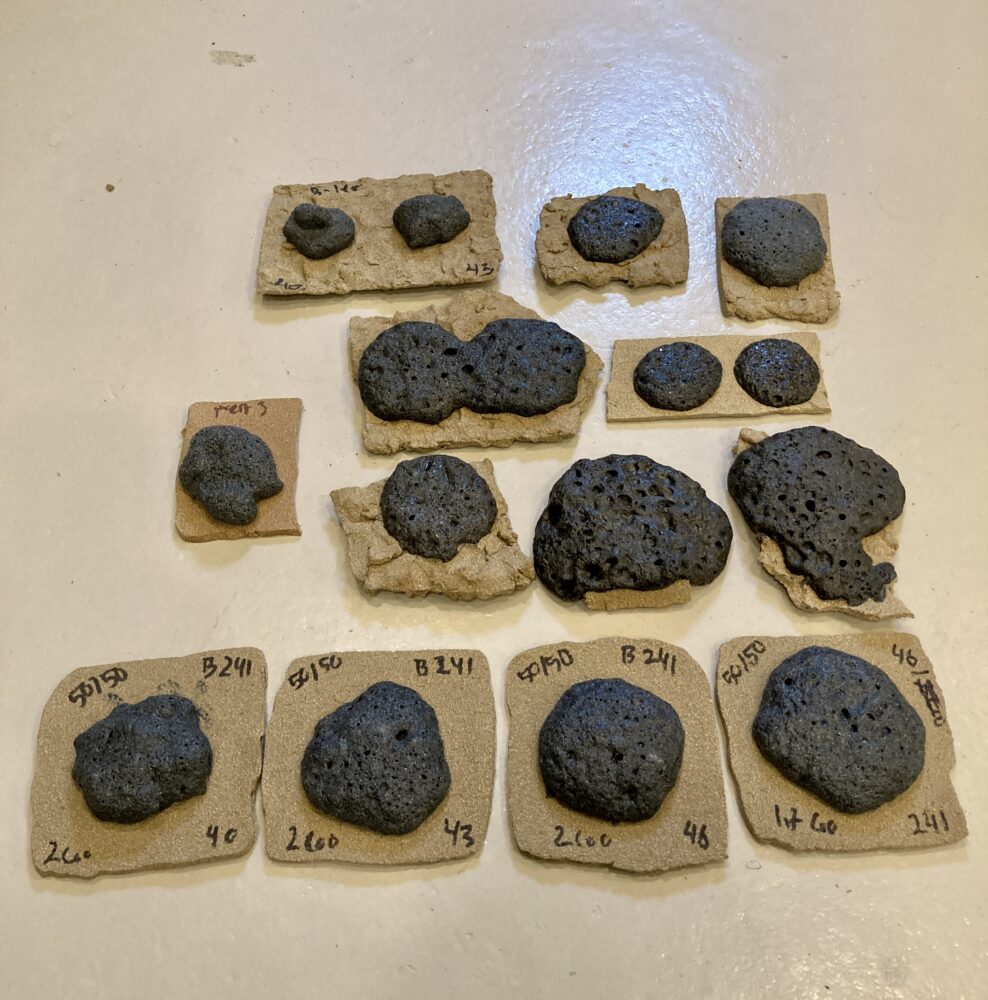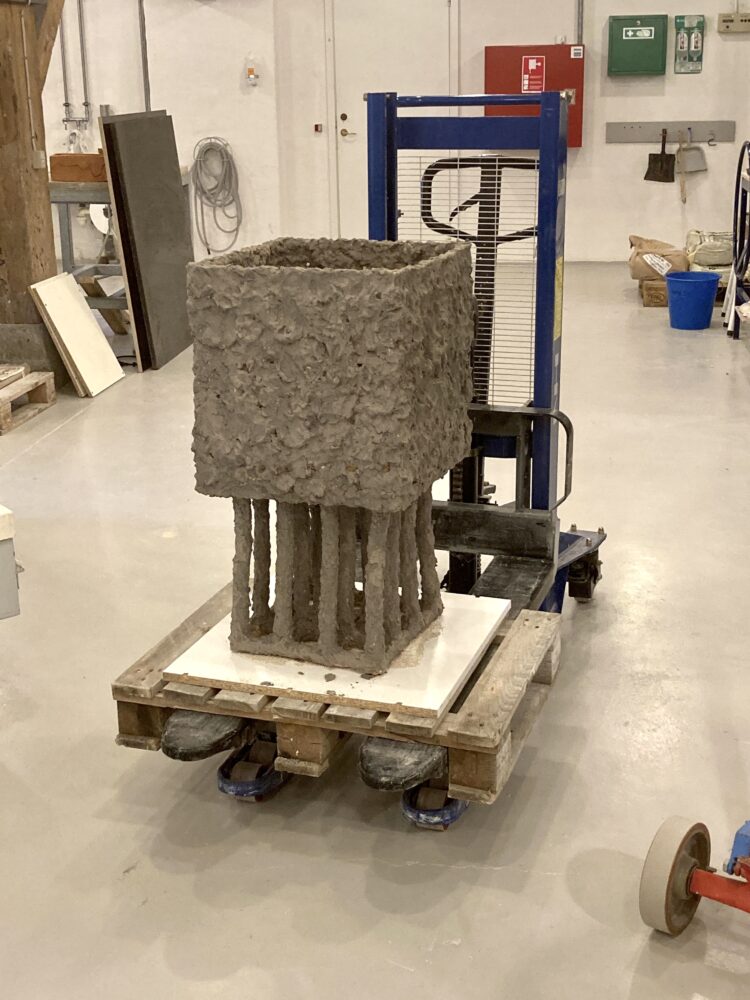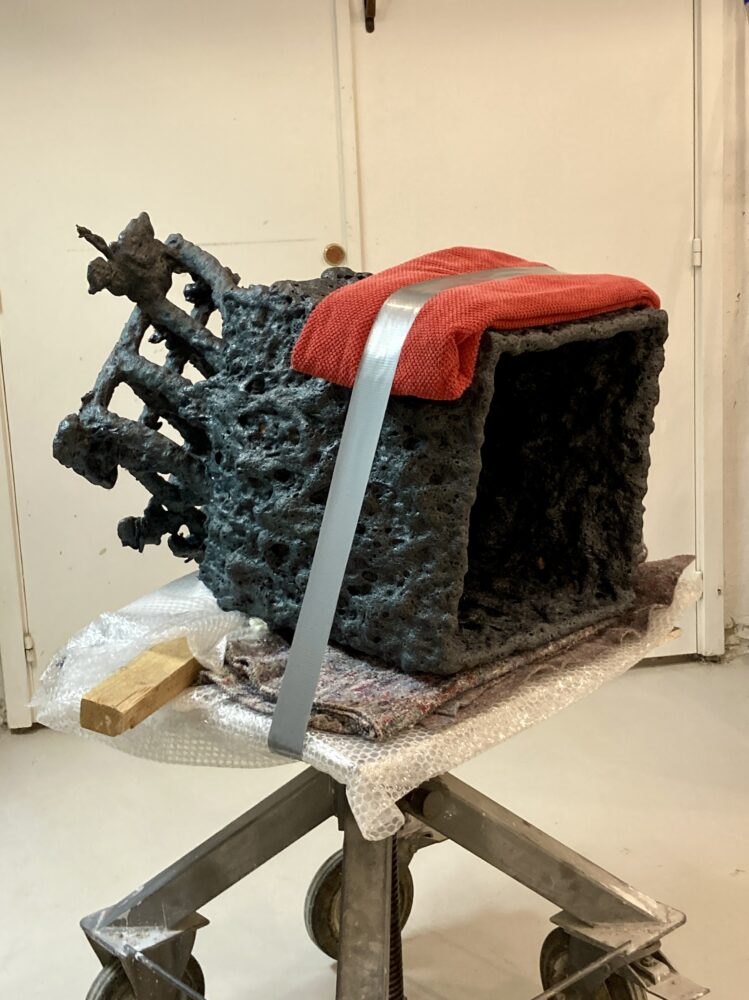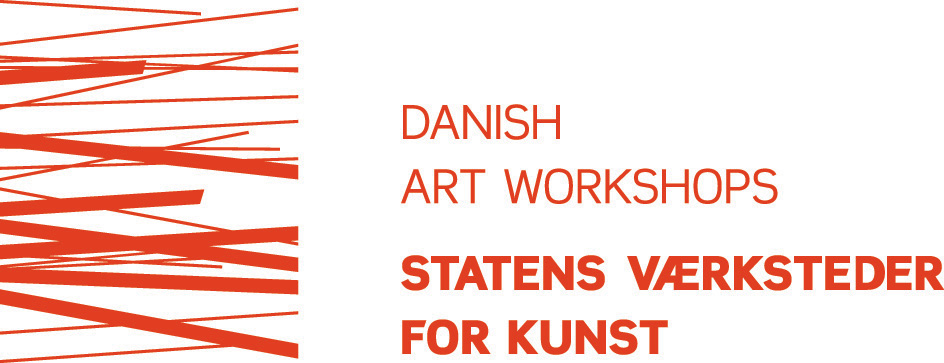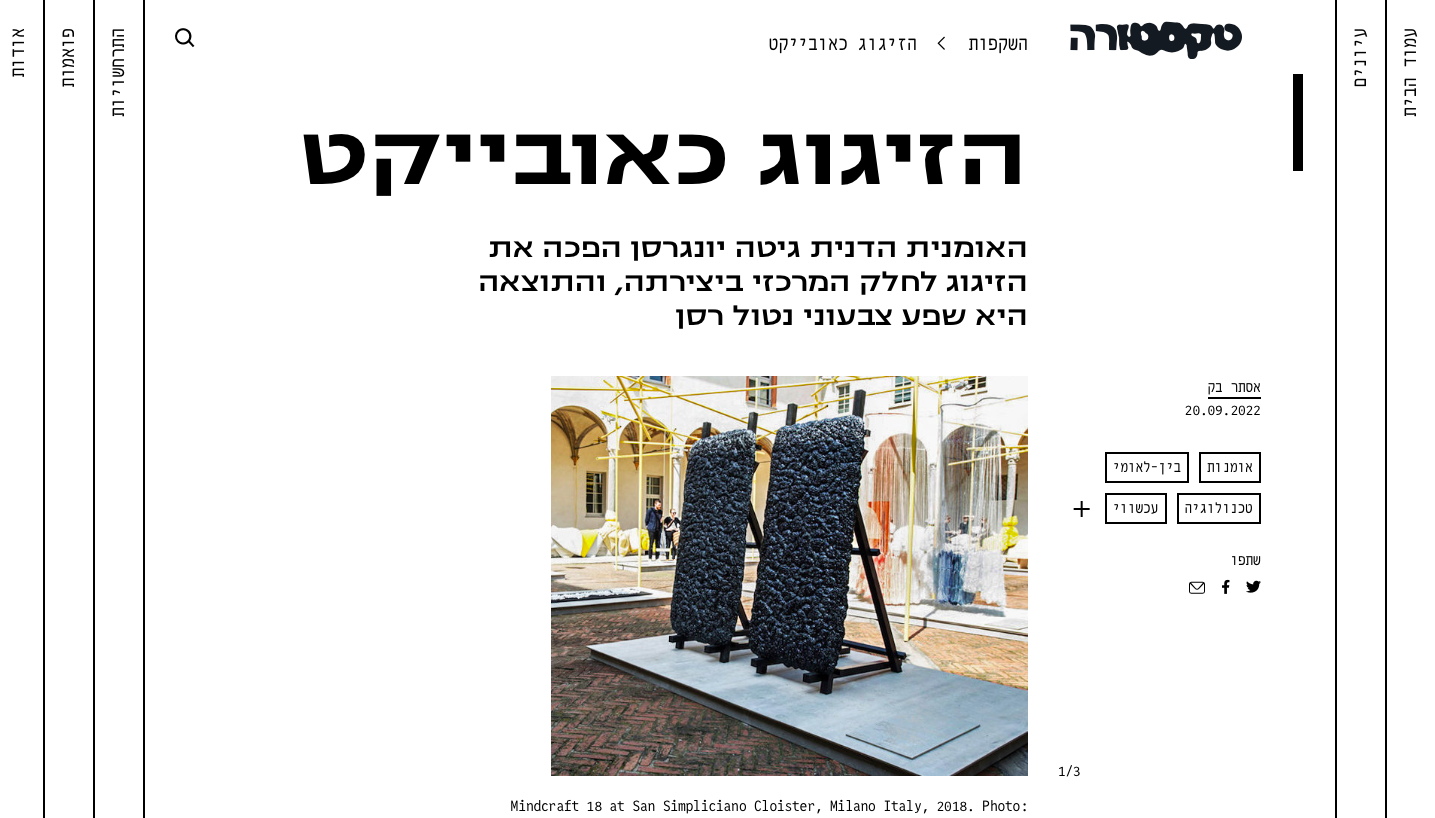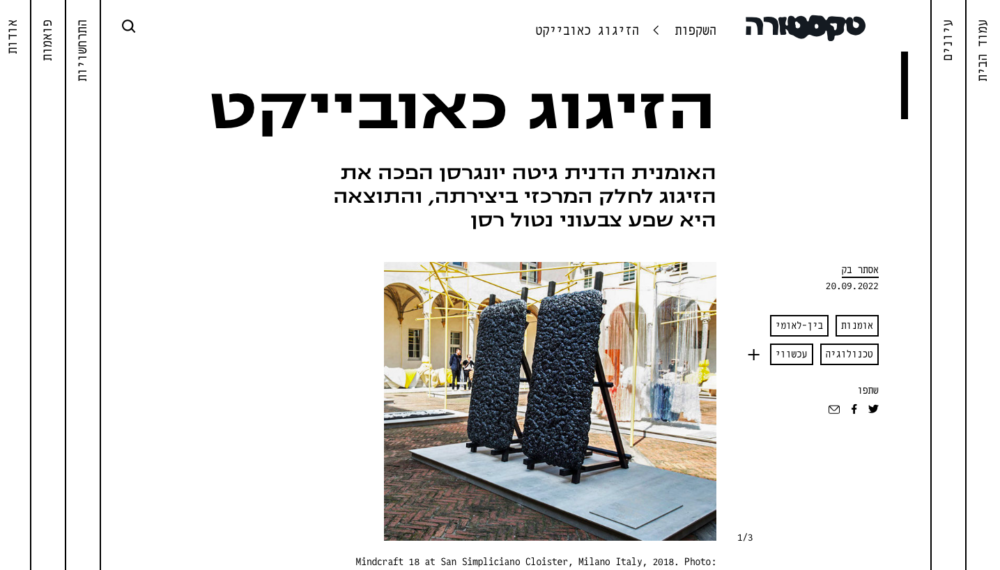Text from the book Gitte Jungersen, Ceramic Works. Published by Arnoldsche Publishers 2018.
Jorunn Veiteberg, D.Phil., art historian, independent writer and researcher.
Between Control and Chaos
Gitte Jungersen belongs to a generation of ceramists who have done a great deal to change people’s conceptions about what ceramics can be. When she made her debut in the 1990s, pots based on shapes that were basically geometrical, were still the standard repertoire of Danish ceramists. Her first work was no exception to this rule. At the Charlottenborg Spring Exhibition in 1995, she showed a number of cubic vessels. It was even so not form and function that these invited the observer to reflect on, for it was already obvious in these early works that what interested her most is the glaze: viscous and full of porous air-bubbles, it forms a contrastive mass to the strict cubic shape.
Not to make the glaze subordinate itself to or merely enhance the form was a breach of long-standing conventions within the field of ceramics. A convention Jungersen was familiar with from her own education from 1988 to 1993 at the Danish School of Design in Copenhagen, where the ideals from Bauhaus and modernism still reigned supreme. This also meant that the main focus was on the production of functional design. But her own preferences were more far-ranging. Her models were the Dane Gutte Eriksen (1918-2008) and the American Ron Nagle (b. 1939). It is harder to imagine more contrasting artists than these, but in Jungersen’s work it proves possible to unite them in an original way. Not in the sense of their being traceable as direct quotations; it is more a question of a kinship of attitude and approach. Gutte Eriksen had studied under Bernhard Leach and there become acquainted with Japanese ceramics. From this tradition she took with her an interest in what can be referred to as the basic element of ceramics. She mixed her own clay and was deeply taken up with what the firing temperature and addition of fire and air during the firing process could add to the surfaces of various textures and colour nuances. Jungersen share the interest for exploring the actual material and firing process, but she departs from the traditional attitude to glazes. Eriksen’s simple, classical pots are based on the idea that form and glaze are a totality, and that it must be possible to read the way in which the pot has come into being from the end-product. In Jungersen’s work, the glaze is ‘allowed’ to follow its own paths, and this often plays a major role.
Ron Nagle resided in California and his ceramics are typified by a life of surfing, rock music and the ‘hot-rod’ culture. Colours such as lilac and pink, and glazes that resemble a viscous layer of smooth, dripping chocolate, point more towards cartoon series, grafitti and popart than ceramic traditions. At the same time, his small sculptures nearly always have the cup as their point of departure. They are often composed of various elements, and he is also extremely free in his combination of techniques and material. The orientation towards contemporary culture, high as well as low, and the use of synthetic colours are also things Jungersen shares. This was especially demonstrated by her pink and green cubes at the exhibition New Danish Ceramics at Designmuseum Danmark in 2003. Such a use of colour was still unusual in Danish ceramics at a time when ‘natural’ colours were the preferred ideal. Jungersen’s colours had more associations with something artificial than with ceramics, and therefore functioned as a means of creating distance. That was the intention. She has never sought traditional beauty and harmony, but always introduces a disturbing element. The plastic-like colours lent her ceramic pieces an aura of pop-culture and humour. That this choice also included an indirect critique of other sections of the Danish ceramics environment, which was characterised by a more romantic approach to the discipline, should not be concealed either.
A new type of ceramics
In the 1990s, the most important arena in Denmark for the type of ceramics that Jungersen represented was the artist-run space Udstillingssted for Ny Keramik, which existed from 1996 until 2000 in Copenhagen.1 The exhibition venue ‘aspired to engender a debate around the very notion of ceramics, internally within the profession. At the same time it endeavoured to effect a change in public expectations.’2 When it closed down after four years, those involved were able to ascertain that in addition to having created a space for experimental and conceptual ceramics they had also contributed to outlining the contours of a new generation of ceramists. This generation, to which Jungersen also belongs, still forms the central hub of Danish ceramics.
Together with Flemming Tvede Hansen, she was behind the 1997 exhibition ‘Deform’ at the Udstillingssted for Ny Keramik. The title emphasises the dissociation from the insistence on perfection that has occupied such a strong position in Danish design. Closely linked to conceptions of the perfect is also the idea that an ideal form exists. It was such conceptions that ‘Deform’ thematised – and effectively punctured. The exhibition comprised a series of vessels. As their point of departure, all of them had been made based on the same geometrical ball-shape, but during the firing they had been halted at various stages of a deformation process. By changing the temperature in the kiln the clay had been pushed past melting point. This meant that the shapes ranged from an intact ball shape to a molten lump. The static ideal form had, in other words, been transformed into an organic, fluid movement. Although each part of the series can be said to be a unique object, it is the series that creates the narrative. In that way, the process becomes part of the content. As they themselves formulated it: ‘The exhibition can be seen as an experimental investigation into creating a sculptural expression on ceramics’ own premises, inasmuch as the design is based on the actual chemical process which is set into motion when the clay is fired.’3 This resulted in new, strange and unique shapes that support the assertion that a perfect shape is a transient shape. Many artists share this attitude towards perfection. The perfect is perceived as being static and regulated, cold and hard. If art is to be an expression of freedom, there must be room for the unexpected, surprises, risk-takings, and that means that the irregular and deformed rather than the perfect is more likely to characterise artistic quality.
A new platform for ceramics came into being in Denmark with the advent of the gallery Copenhagen Ceramics, which Bente Skjøttgaard, Steen Ipsen and Martin Bodilsen Kaldahl operated between 2012 and 2014. It too was an idealistic step taken to promote contemporary ceramics, but this time in a closer cooperation with the international scene. Also here Jungersen was one of the exhibitors, and for her too the 2000s were characterised by increased international participation. In 2008, she was a jury member and exhibitor at the Biennale in Vallauris in France, and she has been active in the Network for Nordic Contemporary Ceramics since its establishment in 2013.4 The underlying reason for creating such a network is the need for a forum where people can reflect on and discuss present-day ceramics. The ten members of the network have both been on study trips and held exhibitions together, and as artists they have all stood for an experimental and non-dogmatic approach to ceramics.
Glaze as material
Experimenting with glazes has been Jungersen’s prime concern. The desire to create a new form of expression in glaze has taken her in various directions. Via chemical experiments involving mixing mineral raw materials she has developed her own glazes. To be able to create one’s own materials that are both unique and complex has been satisfying in itself, but it has also been a question of exploiting what glaze is as a phenomenon. Of key interest here is the firing, where the major transformations take place. At maximum temperature in the kiln, the glaze turns into a melting and boiling substance which on cooling congeals into an after-image of this process. She also plays on the associations glaze gives rise to as a physical mass. Concerning the thick layers of glaze on her cubes Love Jönsson, for example, wrote in a catalogue: ‘[T]he impression one gets is that a layer of lava from the volcanic underground has formed a drape over the pure geometry of culture.’5 Jungersen herself has also commented on the dramatic aspects of her work methods: ‘The process is driven forwards via experiments with extremely active glazes that, during the firing, boil and crack in a way that reminds one of geological processes. After cooling, the surfaces are now congealed traces of the violent transformation, like snapshots from a dramatic process.’6 In this way, the firing process can serve as an image of the cycle that applies to all materials. Sooner or later, all substances dissolve into atoms and enter into new combinations. But it can also serve as an image of a tension between what is manmade and the forces of nature.
The masses of glaze gradually form excrescences on the cubes and they acquire an increasingly independent nature. In a series of wall objects from 2007-08, Jungersen exploits their organic nature and lava-like surface to create landscape-like formations. On these she placed miniature plastic figures of various animals, or cartoon heroes such as Spiderman, or even small trees. These are well-known objects from children’s playboxes, but here they are placed in a completely new context. As the curator Rikke Rosenberg stated in connection with a solo exhibition of a number of these works at Designmuseum Danmark in 2008: ‘Landscape and elements collide, with the result that the frames of logic explode and the portals to the space of the dream and imaginative conceptual representation open up.’7
The use of figures opened up the potential for stories and dramas of a different type than those that had dealt solely with the basic elements of ceramics. In the series ‘Place to be Lost’, which was created between 2010 and 2014, porcelain dogs and elephants were on the point of drowning in a mass that surges in over them like boiling lava. They are quite literally stuck fast, it would seem. In this way, the actual processing of the material underpins the thematic content. The illusion that Jungersen has created of a sticky substance has a particular effect. There is nothing as repulsive as a material that is halfway between liquid and solid, the anthropologist Mary Douglas claims in her book Purity and Danger. We are quite simply disgusted by what is (apparently) sticky. The animal figures form a contrast to the mass of glaze. They have a smooth and shiny surface and their consistency seems to be solid and hard.
The porcelain figures have not been modelled by Jungersen, but have been found in second-hand shops. Some of them belong to fine collector’s items from The Royal Danish Porcelain Manufactory, others are cheap knick-knacks. But in their new context the porcelain figures become distanced from their history and aura of something sweet and romantic. Instead, they become more disturbing and nightmarish. This became even more obvious when they were exhibited on antique furniture at the international ‘Thing Tang Trash’ exhibition at the Art Museums in Bergen in 2011. The associations with respectable bourgeois homes formed a stark contrast to the struggle being expressed in Jungersen’s objects. From children’s books and fairytales we are used to projecting human attributes onto animals, and it ought not to be difficult to identify oneself with the drama being enacted in these scenes. If one so wishes, one can interpret this drama as a portrayal of the studio ceramist’s lonely struggle and dialogue with the material, with the artist alternately in control and submitting to the force that exists in the material itself. This struggle is depicted with an eye for both the absurd and the comical. At the same time, Jungersen emphasises that for her this type of objects have to do with identity, professional as well as personal. More precisely, with the disquieting aspect of exposing oneself to uncontrollable states where one lives in the tension between the fascinating and the repellent.
The incorporation of found objects became a means for Jungersen to finally break free of the vessel tradition. In this respect, they represent an important phase in her art production, even though she now regards them more as a parenthesis. Instead, it is working with large surfaces of glaze that has mainly preoccupied her in recent years. The first time she showed such works was in 2016 at the exhibition ‘All is Flux’, which she shared with her colleague Kristine Tillge Lund at Gustavsbergs Konsthall outside Stockholm.
The material in these objects is exclusively made up of layer upon layer of glaze. Initially, they are shaped as a strict rectangle, but during the firing they melt and flow into organic fields of glaze. Control and loss of control is also the basic theme here.
Large surfaces and small sculptures
The format has steadily increased. During a working stay at the Oslo National Academy of the Arts in winter 2017, she produced her largest sculptures so far, and these were for a solo exhibition at Bagsværd church in Denmark. Form and format, according to her own statement, have been ‘conceived as an echo of the very strict system of measurements that makes up the gallery passage, but a diffuse, organic echo, while the building is otherwise characterised by strict lines.’8
The two sculptures are composed of the same glazes, but the mixture is slightly different. In this way, they appear to be ‘the same, yet different’.9 The choice of format also expresses a desire to work in a scale that reflects the size of a human body. As she writes in an accompanying exhibition text: ‘I’m keen to unfold the potential of ceramics to communicate physically and sensually – not predominantly visually optical. Therefore it has been important for me to work in this pretty large format.”10
Many of the larger works are kept in dark colours. At a distance they can look black and monochrome, but at close quarters they will reveal a rich interaction of blue, grey and black nuances, and the texture will also be seen to be rough and tactile. Thick layers of her selfmade glazes have been mixed with bought earthenware glazes, and occasionally mother-of-pearl lustre additionally adds life to the surface.
In a series of smaller objects, Little Hybrids, from 2015 onwards do plastic-like colours in bright, synthetic colours once more become predominant. Over a strict basic structure which can resemble a frame, extremely thick layers of glaze have congealed in a movement of free fall. When these objects were shown at KRAFT Bergen in Norway, Jungersen described them as being both inviting and repelling at one and the same time: ‘The glazes, because of their consistency and colours, give rise to dual associations: As a raw, chaotic natural force, but also artificial in their colours and consistency – like an “edible” substance that is delicious like sweets but also almost like an alien, overwhelming mass that takes over the form.’11
Making ceramics has to do with processes that take time. It starts with a formless raw material that one is to mould into a fixed form. This means everything from controlled and analytical work to a more or less large gamble. It is to this type of history and process that Jungersen’s objects bear witness. ‘My work springs from a fascination with the transformation in ceramics from formless raw materials into melting and hard-fired congealed movement,’ she writes in a statement from 2016.12 The duality that lies in this transformative process between coming into existence and dissolving, control and chaos constitutes the core of her ceramic art.
Jorunn Veiteberg
Notes
1. The gallery was started by the ceramists Turi Heisselberg Pedersen, Lone Skov Madsen and Mark Lauberg, and the circle was later expanded to include Bente Skjøttgaard and Michael Geertsen.
2. Ny keramik / New Ceramics. Udstillingssted for ny keramik, Copenhagen: Forlaget Rhodos 2002, p. 7.
3. Ibid., p. 28.
4. Apart from Gitte Jungersen, the members of the network are Heidi Bjørgan (NO), Christin Johansson (SE/DK), Kristine Tillge Lund (DK), Mårten Medbo (SE), Gustaf Nordenskjöld (SE), Irene Nordli (NO), Kjell Rylander (SE) and Caroline Slotte (FIN).
5. Love Jönsson: ‘Gitte Jungersen. Something warped and more demanding.’ Gitte Jungersen. No listed year, p. 5.
6. Unpublished note from Gitte Jungersen.
7. Rikke Rosenberg: ‘Place for a Secret. Ceramic sceneries by Gitte Jungersen.’ Place for a Secret. 2008. Unpaginated.
8. Exhibition text to ‘Now and Here’, Bagsværd church, 1 June – 3 July 2017.
9. Ibid.
10. Ibid.
11. Exhibition text to ‘Hybrids Gitte Jungersen Kristine Tillge Lund’, KRAFT room for craft, 29 September – 29 October 2017.
12. Gitte Jungersen, Glasur – kemi, masse og myte. Hempel Glasmuseum 2016, p. 12.

